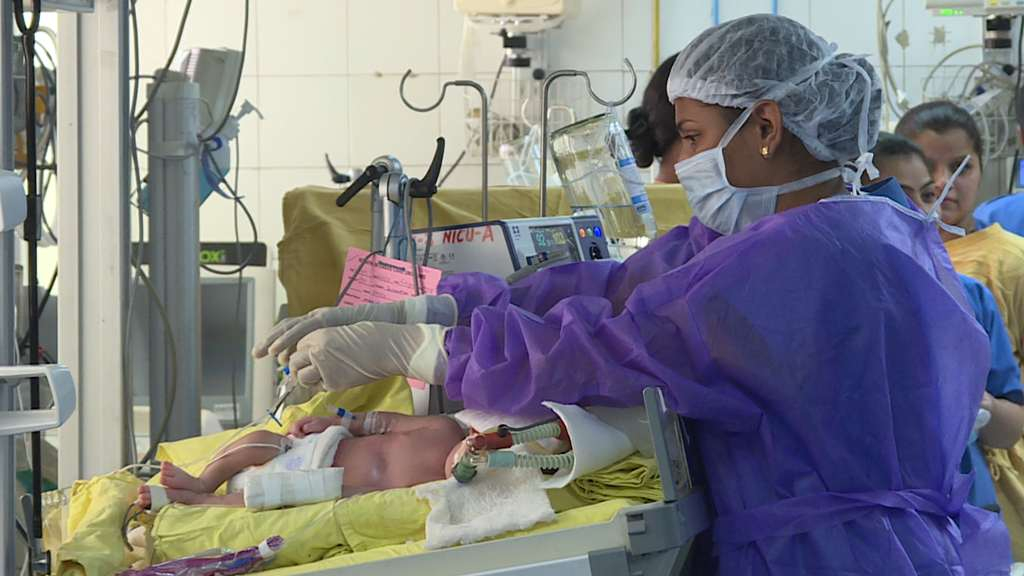
Tech & Sci
22:34, 31-Dec-2018
Alarming levels of drug resistance worry India
Updated
16:43, 04-Jan-2019
By Ravinder Bawa
02:19

The neonatology unit of the All India Institute of Medical Sciences, a premier government-run organization, is working hard to keep the procedures infection free. Infection prevention and control has become necessary as fatalities of antimicrobial resistance (AMR) have increased.
The head of the unit Dr. Ramesh Agarwal explained on the basis of experience with newborns: "The case fatality is 30-35 percent among the neonates which means three to four out of 10 babies who die even if you treat them very well and bug is sensitive to antibiotics. This proportion doubles when the bug is not sensitive to the antibiotic that you are giving so the case fatality is higher among neonates in general but particularly when it is a resistant bug in neonates compared to any other age group. Newborns are more vulnerable to infections than adults."

Poor hygiene and sanitation lead to spread of infections in India. /CGTN Photo
Poor hygiene and sanitation lead to spread of infections in India. /CGTN Photo
AMR has become a major public health challenge in India. There is a huge burden of infectious diseases, poor sanitation and inadequate healthcare systems. “In health care settings you have misuse, overuse and inappropriate use of antibiotics so that has fueled AMR. We have come to a status where we are standing on the verge of losing every antibiotic we have," Dr. Agarwal explains.
There is a full-blown health crisis in the healthcare system in the country. According to a study, conducted by researchers from Johns Hopkins University School of Medicine and the Center for Disease Dynamics, Economics and Policy, superbugs kill more in India than globally.
Indian Council of Medical Research is collecting data from tertiary hospitals and is collating it. Dr. Kamini Walia, head of the team which is working on AMR said: "The information we are collecting is quite alarming. We have 50 to 60 percent resistance to most of the drugs which are being commonly used. The situation is scary. But this data is coming from tertiary care hospitals so it is not representative of the community. We need data from the community before we can generalize."

Nurses of neonatology preparing a list of dos and don'ts when it comes to treating the new-borns. /CGTN Photo
Nurses of neonatology preparing a list of dos and don'ts when it comes to treating the new-borns. /CGTN Photo
The data collected from the hospitals shows the burden of hospital-acquired infection is on the rise leading to deaths in many cases especially among people of old age. Dr. Walia added: "The intensive care units CU, the wards and every other place have to be under a stringent infection control. Somehow we did not build those capacities in our hospitals and as a result, the volume of hospital-acquired infection is very large. Since that is the largest pool of infection that we have, it serves as a numerator for the proportion of drug-resistant infection that we see coming from that large pool."
The government has taken steps to handle the situation by making India's National Action Plan on Antimicrobial Resistance (2017-21). Its been 18 months since the plan came into being, not much of it has been implemented on the ground. According to the plan, steps like strengthening laboratories, developing capacity and finalizing mechanisms and modalities for nation-wide AMR surveillance in food, animals and environment, should have taken off but nothing concrete is visible so far.
Till the government gets serious about combating AMR, small steps like hand washing can go a long way in controlling infections.

SITEMAP
Copyright © 2018 CGTN. Beijing ICP prepared NO.16065310-3
Copyright © 2018 CGTN. Beijing ICP prepared NO.16065310-3